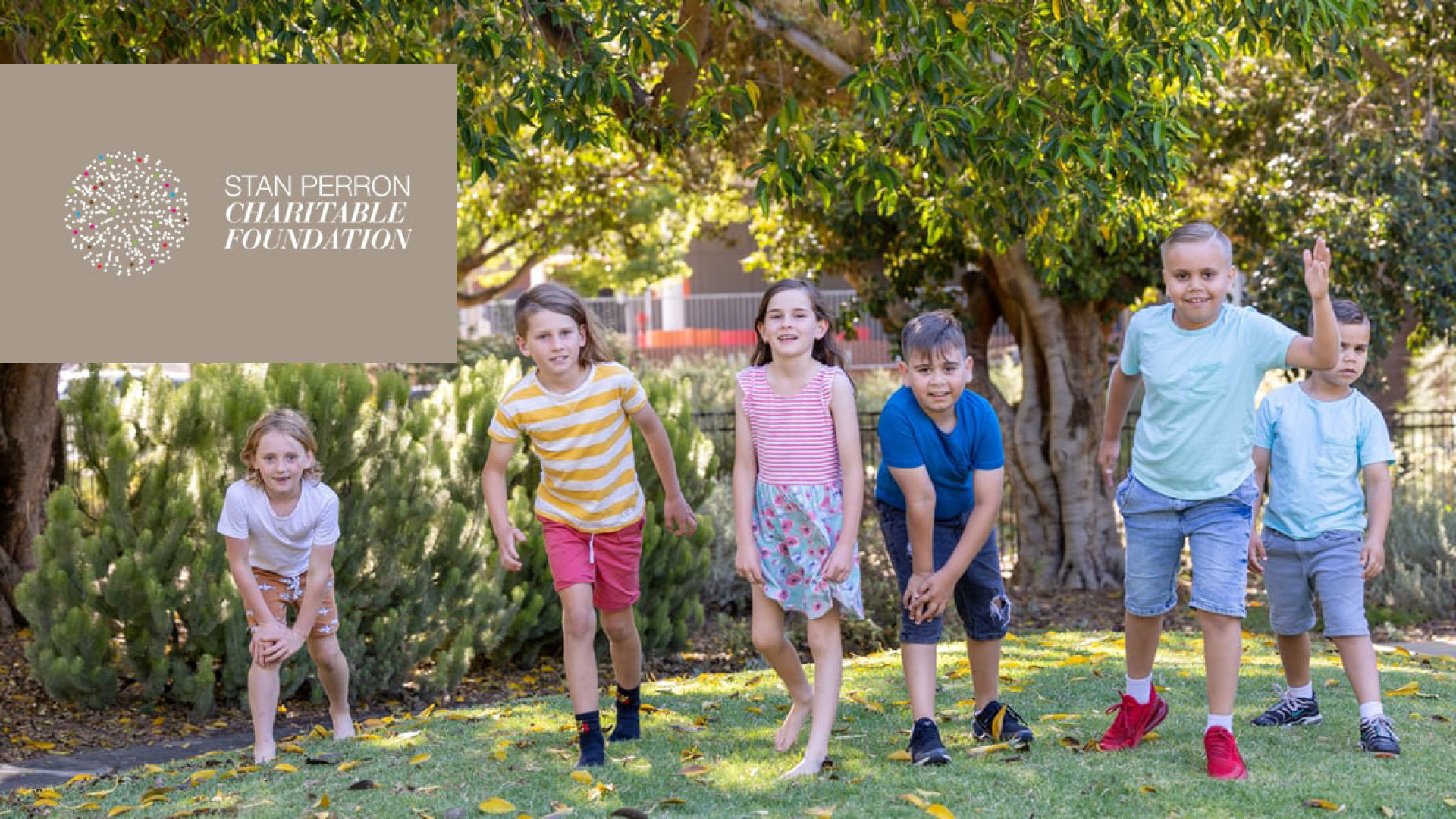Search
Showing results for "early life"
Research
Australian children living with rare diseases: experiences of diagnosis and perceived consequences of diagnostic delaysParents of children living with rare chronic and complex diseases have called for better education and resourcing of health professionals

News & Events
New Stan Perron Charitable Foundation grants to accelerate WA child health researchFunding from the Stan Perron Charitable Foundation will support world class researchers at The Kids Research Institute Australia to improve the health and wellbeing of WA children facing serious health challenges.
Research
Survival with Rett syndrome: comparing Rett's original sample with data from the Australian Rett syndrome DatabaseRett syndrome is a severe neurodevelopmental disorder that typically affects females. Little is known about the natural history and survival time of these femal
Research
Lost in translation: translational interference from a recurrent mutation in exon 1 of MECP2Rett syndrome (RTT) is an X linked neuro-developmental disorder affecting mostly girls. Mutations in the coding region of MECP2 are found in 80% of classic...
Research
3-Dimensional Virtual Reality Versus 2-Dimensional Video for Distraction during the Induction of Anesthesia in Children to Reduce Anxiety: A Randomized Controlled TrialPreoperative anxiety is common in children. It can contribute to negative experiences with anesthetic induction and may cause adverse physiological and psychological effects. Virtual reality (VR) and electronic tablet devices are 2 audiovisual distraction tools that may help to reduce anxiety and enhance the preoperative experience. This study aimed to compare the use of an immersive 3-dimensional (3D) VR to 2-dimensional (2D) video on anxiety in children during induction of general anesthesia.
Research
Performance Accuracy of Wrist-Worn Oximetry and Its Automated Output Parameters for Screening Obstructive Sleep Apnea in ChildrenObstructive sleep apnea (OSA) increases the risk of perioperative adverse events in children. While polysomnography remains the reference standard for OSA diagnosis, oximetry is a valuable screening tool. The traditional practice is the manual analysis of desaturation clusters derived from a tabletop device using the McGill oximetry score. However, automated analysis of wearable oximetry data can be an alternative. This study investigated the accuracy of wrist-worn oximetry with automated analysis as a preoperative OSA screening tool.
Research
Epidemiology of Rare Craniofacial Anomalies: Retrospective Western Australian Population Data Linkage StudyWe aimed to describe birth prevalence of rare craniofacial anomalies and associations with antenatal and perinatal factors. All live and stillbirths in Western Australia between 1980 and 2010 were identified from the Western Australian Birth Registrations and the Midwives Notification System (also provides information on antenatal and perinatal factors).
Research
A survey of the global impact of COVID-19 on the practice of pediatric anesthesia: A study from the pediatric anesthesia COVID-19 Collaborative GroupPediatric anesthesiology has been greatly impacted by COVID-19 in the delivery of care to patients and to the individual providers. With this study, we sought to survey pediatric centers and highlight the variations in care related to perioperative medicine during the COVID-19 pandemic, including the availability of protective equipment, the practice of pediatric anesthesia, and economic impact.
Research
Fit testing of N95 or P2 masks to protect health care workersCoronavirus disease 2019 (COVID-19) is caused by severe acute respiratory syndrome coronavirus 2 (SARS-CoV-2) and has many similarities to severe acute respiratory syndrome (SARS) and Middle East respiratory syndrome (MERS). While reported morbidity and mortality from COVID-19 are lower than from SARS and MERS, many health care workers have been infected (up to 15% of health care workers in Victoria).
Research
Systematic Review of the Effects of Ultraviolet Radiation on Markers of Metabolic DysfunctionHere we review the metabolic effects of exposure to ultraviolet radiation, focusing on the effects of phototherapies
